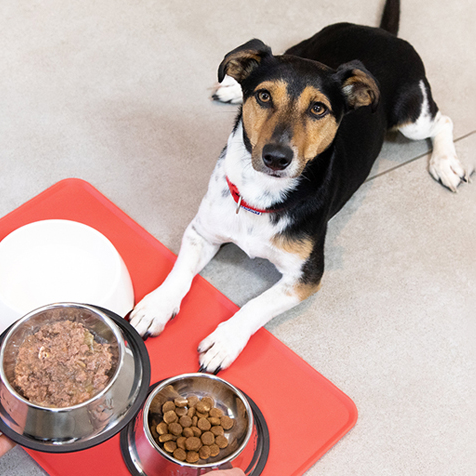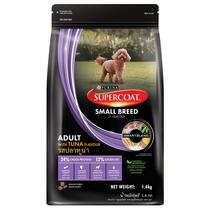
Many of us have probably seen a three-legged dog before – and chances are, they were happy. Whether it’s the result of accident or disease, limb amputation in dogs is common, and dogs are great at coping with it.
Although it involves major surgery, amputation can actually help dogs, rather than hinder them, by removing their source of pain and suffering. Limb amputation in dogs is designed to make their life better, after all, and will only take place if your vet thinks the procedure can achieve this.
Most dogs will happily adjust to life on three legs with your help and your vet’s advice. In fact, they’ll often be so busy running around, chasing balls and playing ‘fetch’ that they hardly notice anything’s wrong.
How will my dog cope with amputation surgery?
Limb amputation in dogs, although difficult to think about at first, could do your severely injured pet a lot of good. In fact, dog amputation surgery may often be the best option for canines with severe injuries from car accidents, other accidents, or for those suffering from bone cancer or other serious diseases.
Of course, it may not be easy for your dog to learn how to move around as they once did. The absence of a limb makes normal movement a bit of a task, and your dog will have to learn how to make up for it before they become their usual, bouncy selves again. However, with time, most can compensate for the changes in weight distribution and learn to walk and even run again. With time and understanding, they could soon be running around in the garden or in the park – just as they used to.
Making a difficult decision
Seeing a content and spirited dog walk down the street on three legs is a reminder that limb amputation in dogs and dog amputation surgery doesn't have to be the end of the world.
Instead, consider it as the beginning of a new life for your dog, a positive option that can humanely extend their life and remove whatever pain they had before. Surgery will only take place if it is beneficial for your dog, so you should know that if this happens, you are doing the kindest thing you can.
However, it’s understandable that electing to have your dog’s limb amputated is a difficult decision. The surgery, recovery and prognosis (depending on the reason for the amputation) should be discussed in detail with your vet, as it is a big decision to make. Larger or heavier dogs may not cope as well with amputation as slim, small dogs and in cases of cancer the amputation may not be a curative procedure.
Raise all your concerns with your vet before the surgery so you can come to an informed decision and do the best for your loyal canine friend.
Helping your pet adapt: limb amputation in dogs
If you and your vet have agreed that dog amputation surgery is the best thing you can do for your dog you should start thinking about their aftercare and how they’re going to adapt to their new life. Your dog needs help and support not just straight after their surgery, but when they’re mobile again – after all, things might be a little different for a dog with three legs.
For your dog’s health and happiness, keep these tips in mind as well as carefully following your vet’s advice.
- Follow your vet’s aftercare instructions carefully, and ask questions if there is anything you are unsure of concerning dog amputation surgery.
- These instructions will likely suggest keeping your dog confined after the operation. Make them comfortable, and keep them entertained in safe, fun ways.
- Don't encourage your dog to jump, no matter how much they want to. They may be disappointed, but you need to do what’s best for them.
- Dogs need to build strength in their remaining limbs, so ask your vet about a slowly increasing exercise program.
- Your dog may find input from a veterinary physiotherapist helpful when it comes to building muscle – ask your vet for details of a good one.
- Initially, short lead walks will be tiring for your dog – just keep in mind that it might take them a lot of effort.
- Ask your vet about alternative forms of exercise including hydrotherapy/swimming, which might be easier on your dog (and they’re still loads of fun).
- Your dog may find it more difficult to get onto their favourite furniture, such as beds, so provide ramps or steps and make sure your friend’s food, water and bed are easily accessible without the need to jump.
- Your dog may not be able to escape danger as quickly as they used to, so keep them out of harm's way until your pet’s speed matches their bravery again!
- Keep a close eye on your dog's weight, as weight gain places more strain on their other legs and makes it much harder to cope. This is very important, as your dog may be more prone to gaining weight since their exercise is reduced.
- Allow your dog plenty of time for rehabilitation and adjustment and always seek more information on the dog amputation recovery process if you have concerns.
- Other pets, especially those that love playing with your dog, may be upset initially by the change in their companion. Reintroduce the patient slowly and keep an eye on things.
- It is possible for pets to suffer phantom pains in removed limbs, so contact your vet if your dog seems to be in discomfort as further treatment may be required.
- If you are worried your dog is not adjusting/coping with the changes, contact your vet to discuss how to make your dog’s life easier – everyone needs a little help sometimes.
Many dogs are currently on three legs and enjoying life just as much as ever, but that doesn’t make it any easier a decision for you and your pet. Limb amputation in dogs may be great for some, but not such a good choice for others; consider your decision and talk it through with your vet.
If amputation is the answer to your dog’s problem, then remember that in many cases with patience, understanding and love your faithful dog will learn to cope and be as happy as ever.
Next, find out more about how to help your dog recover from an operation with our step-by-step guide.










